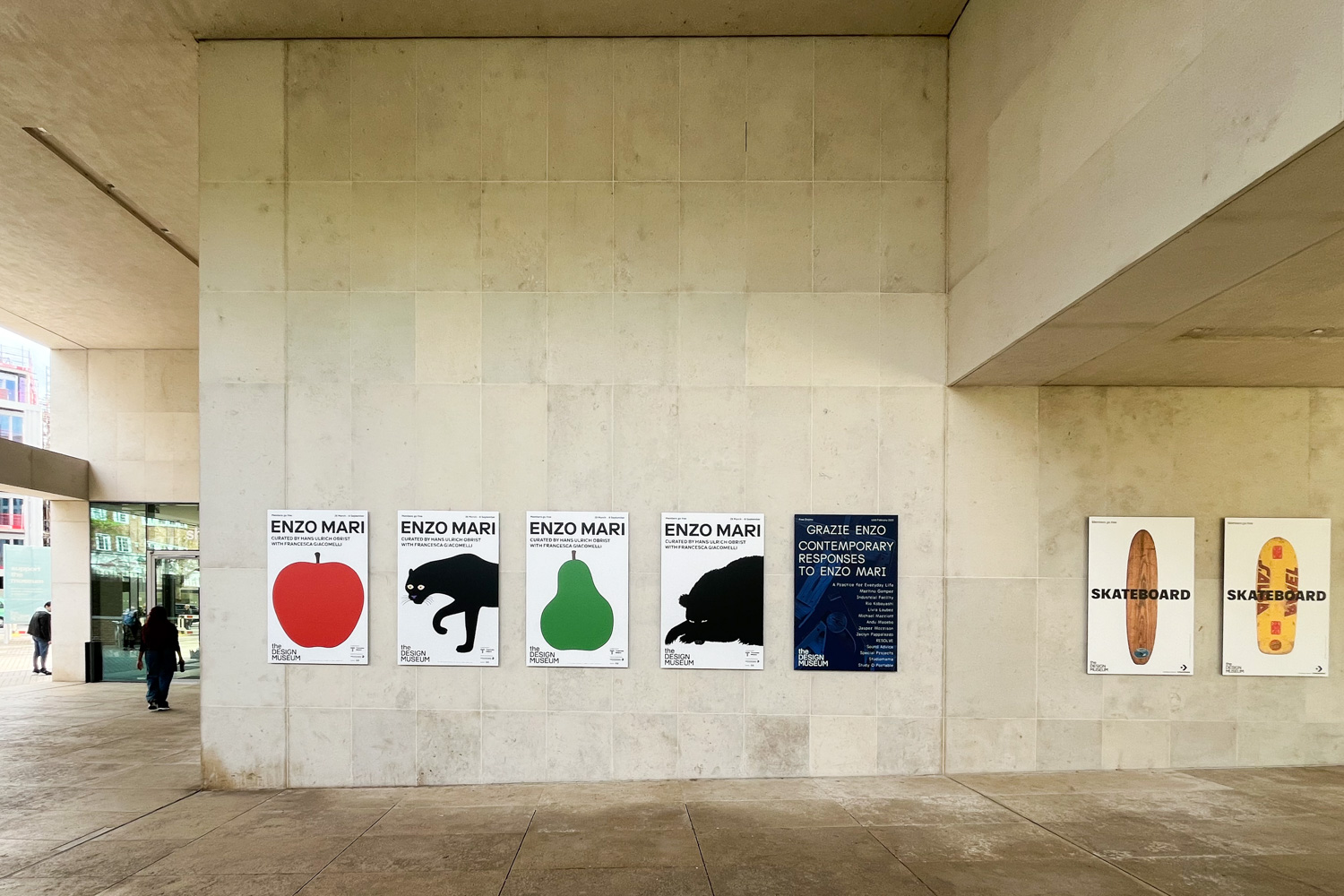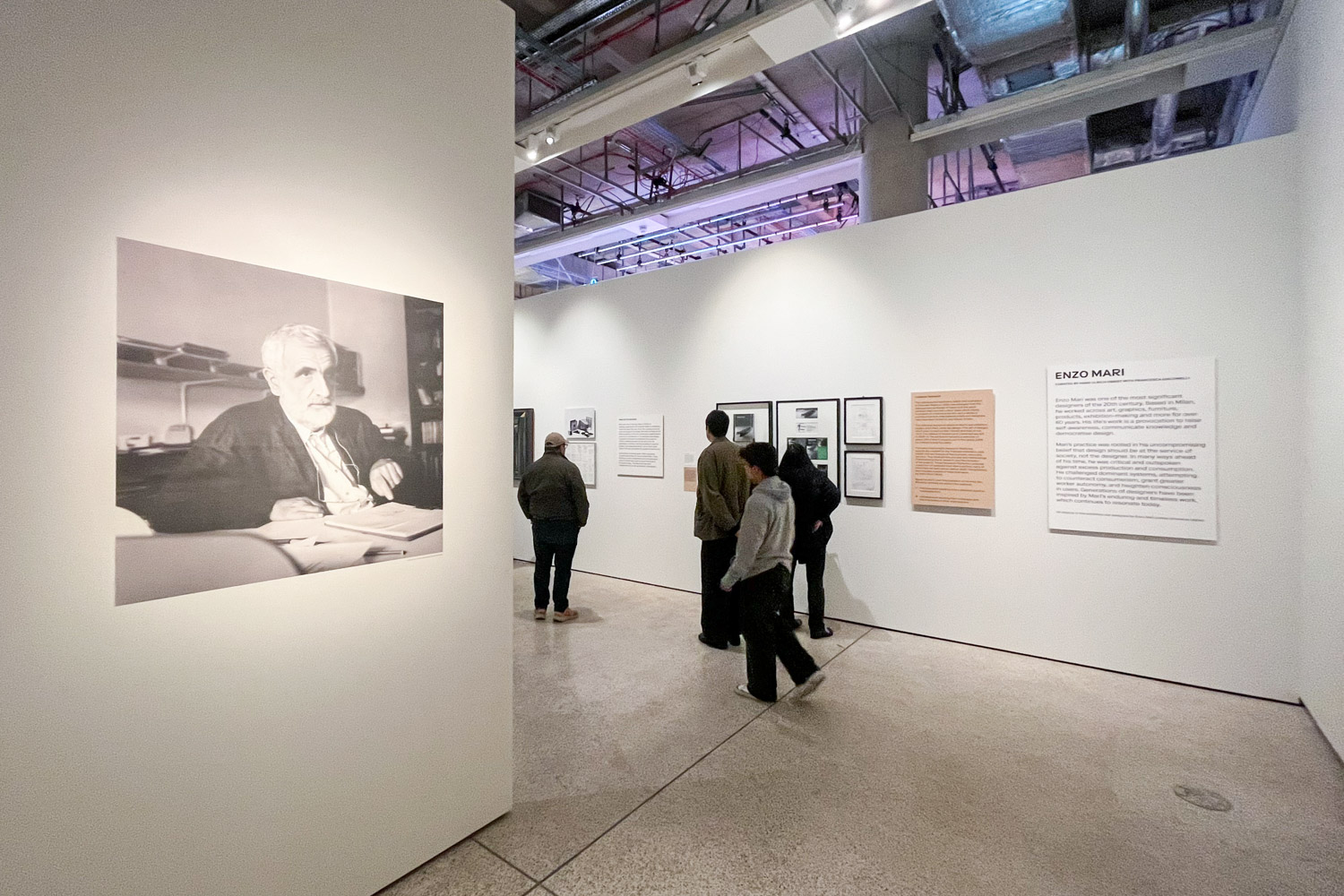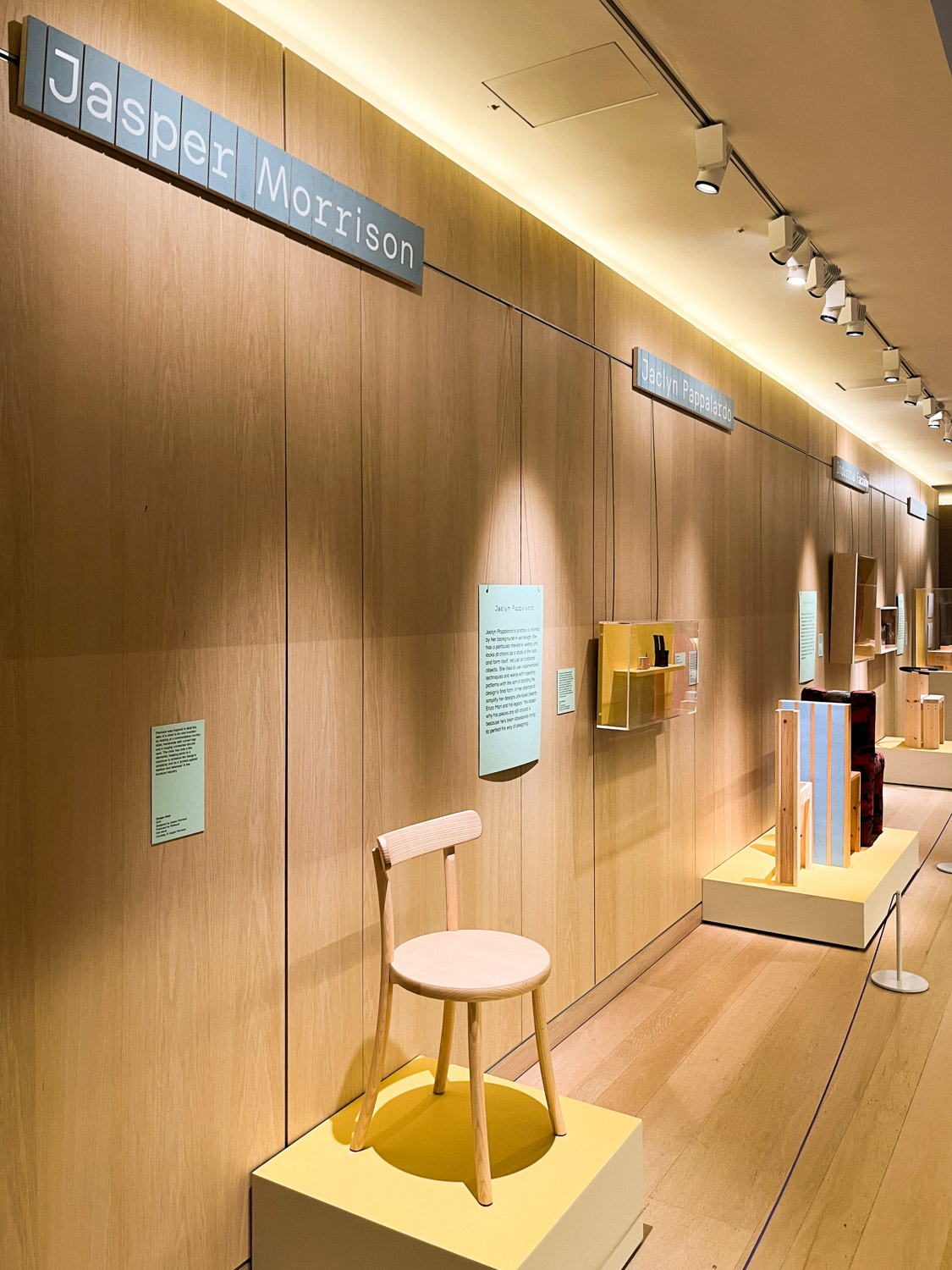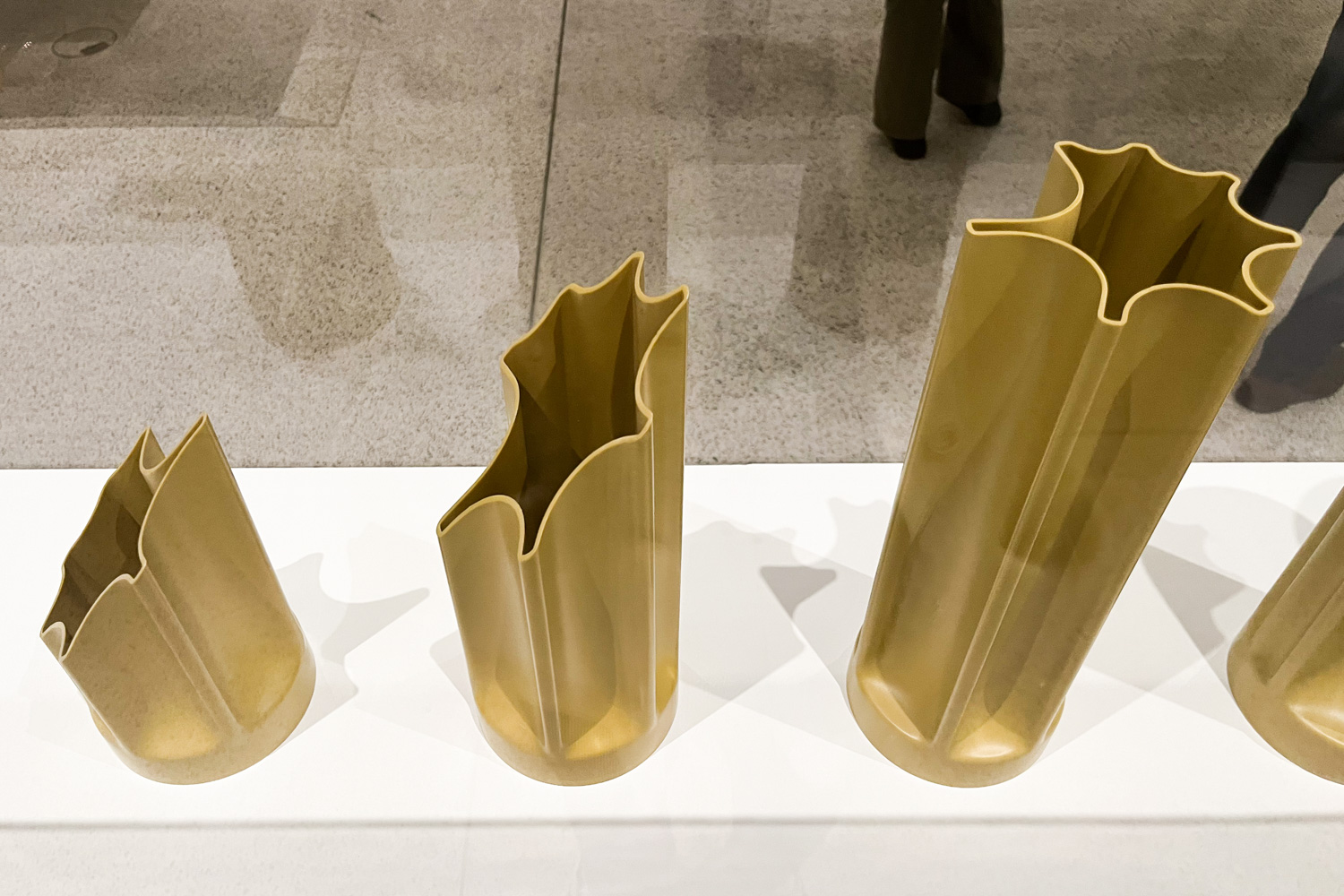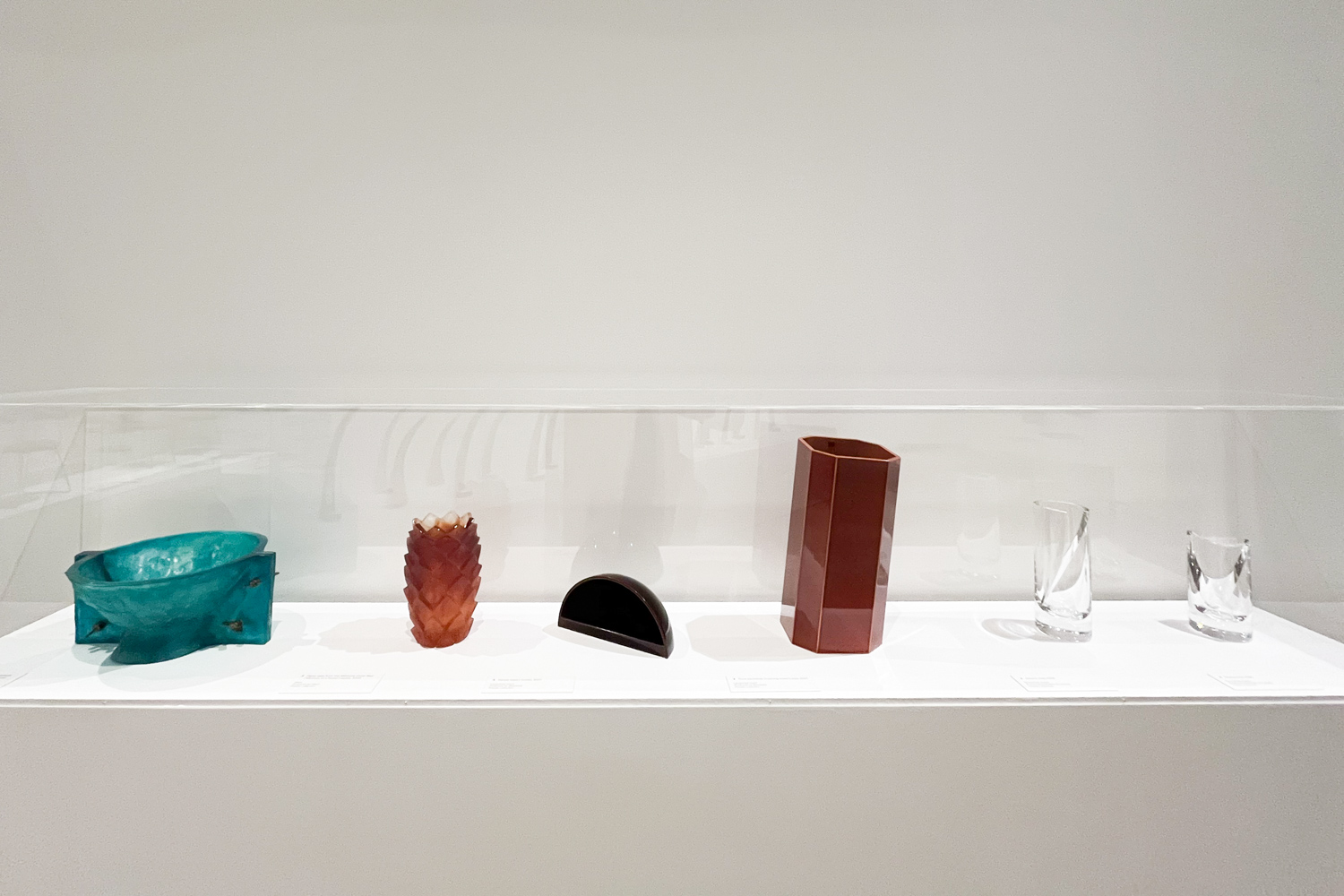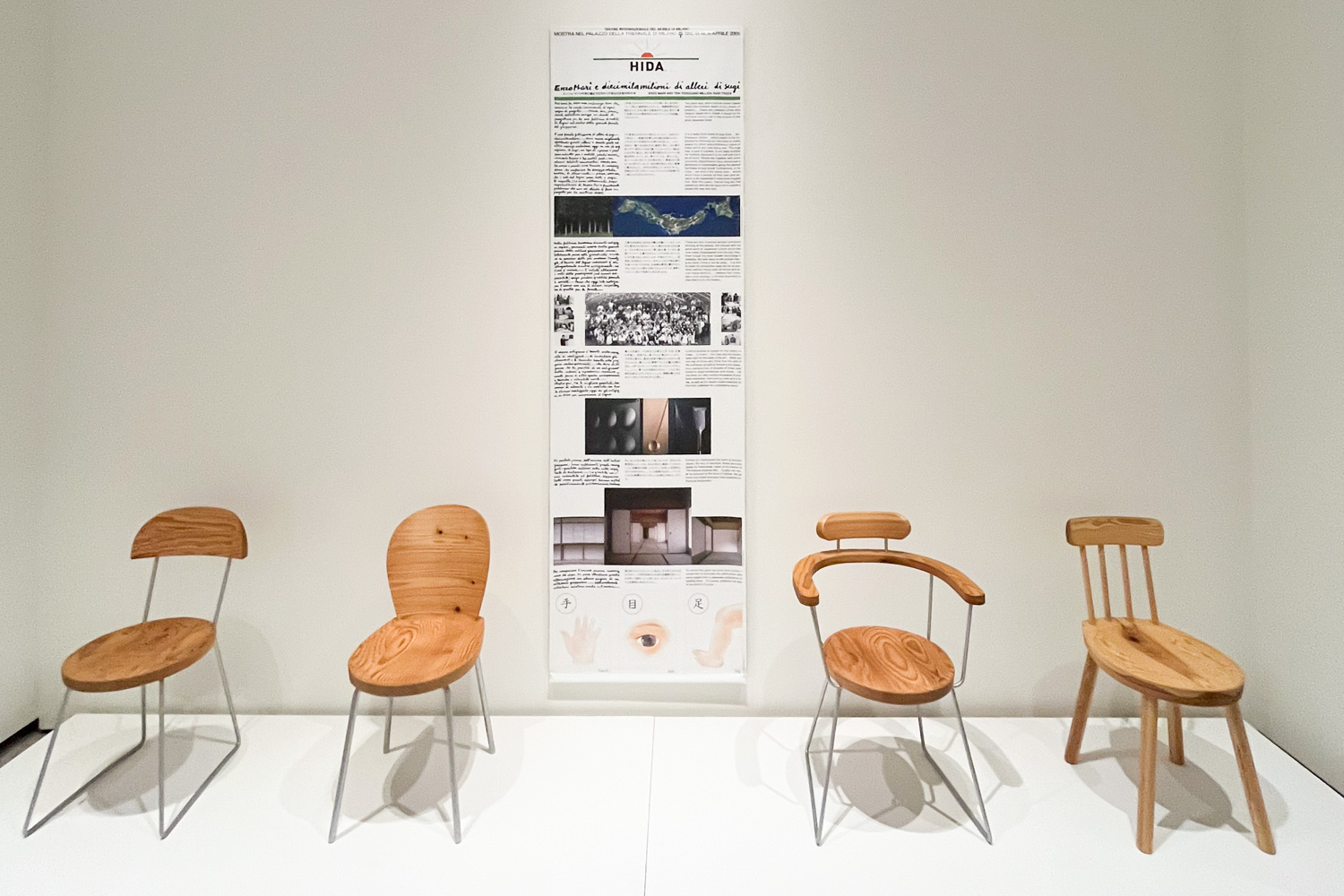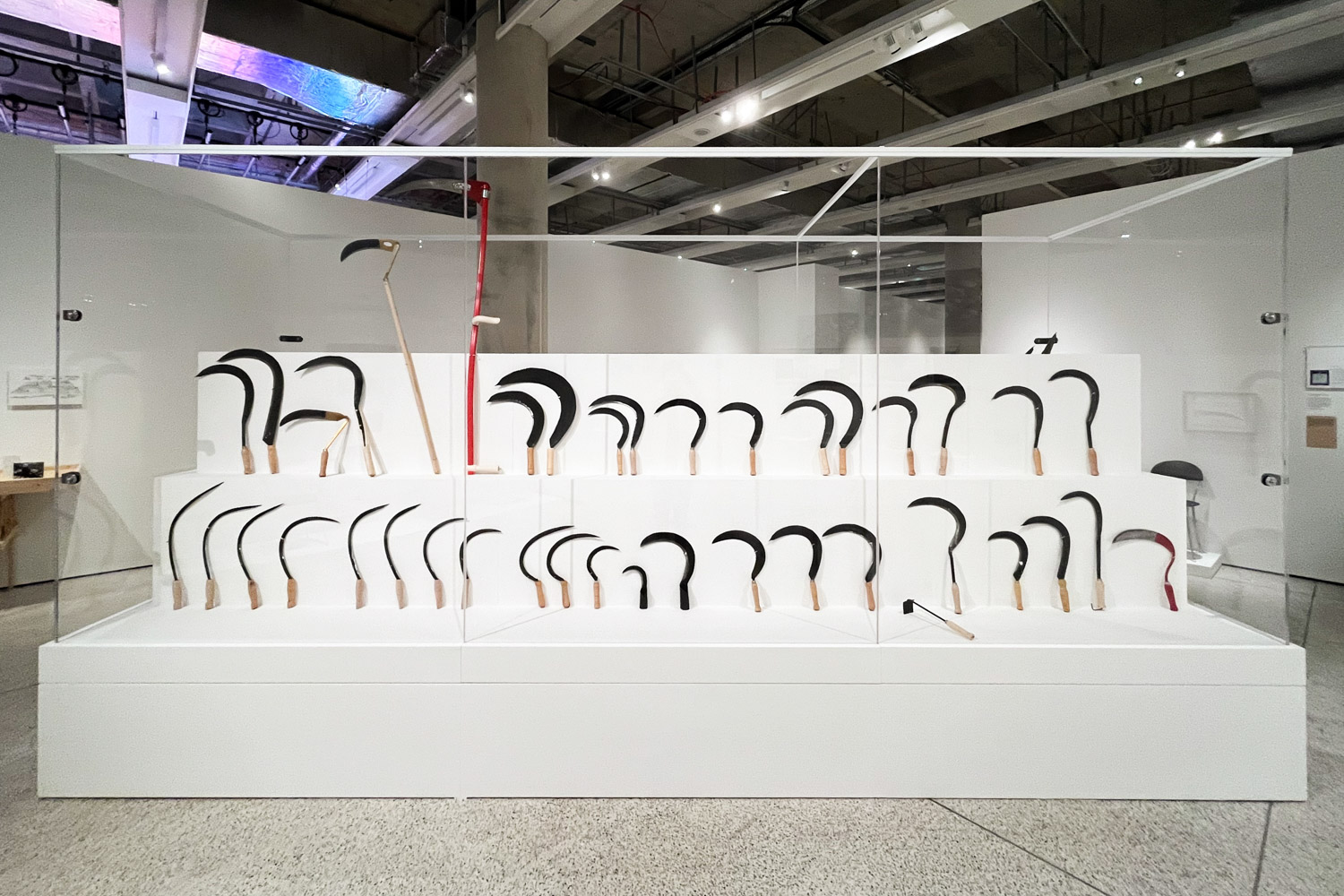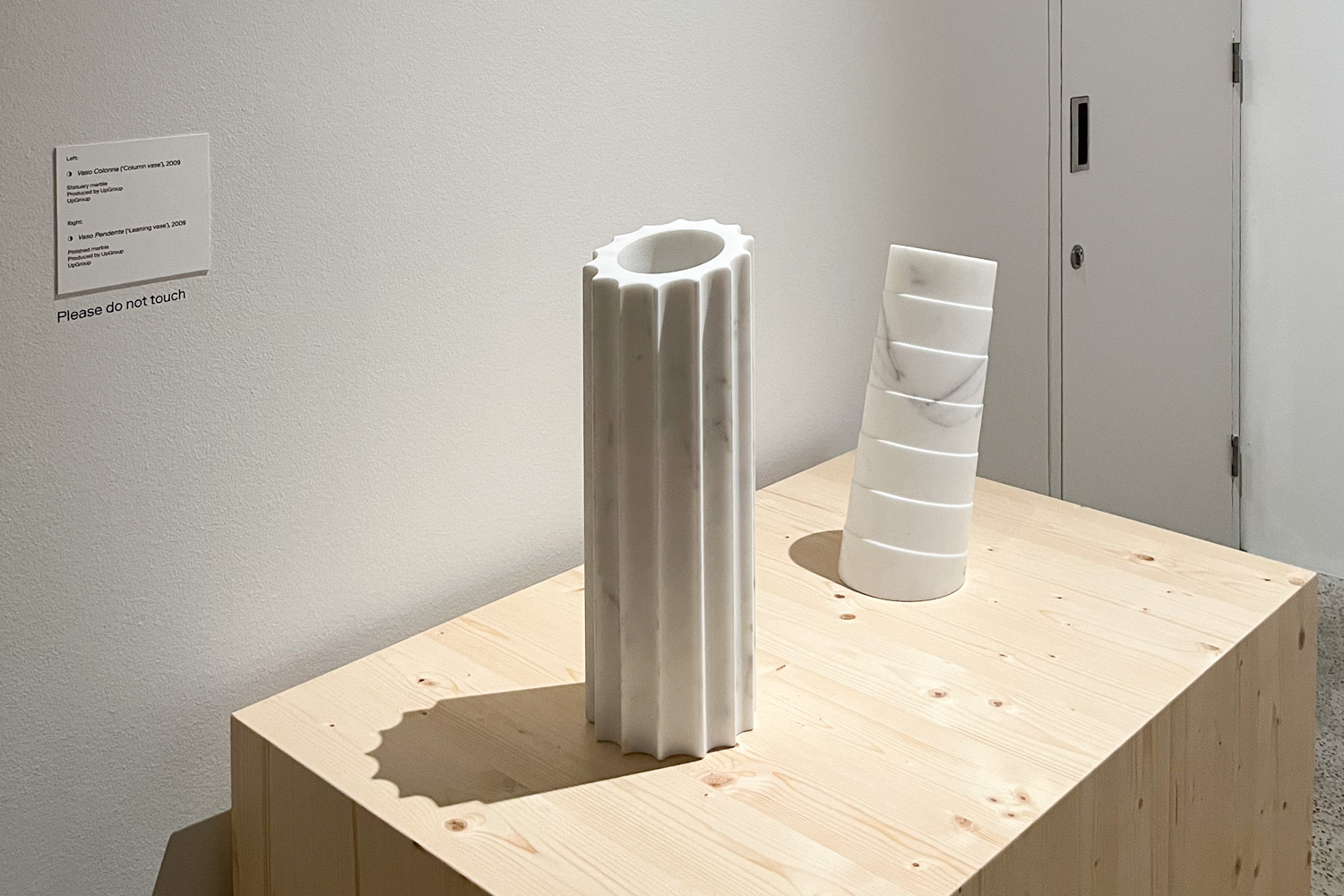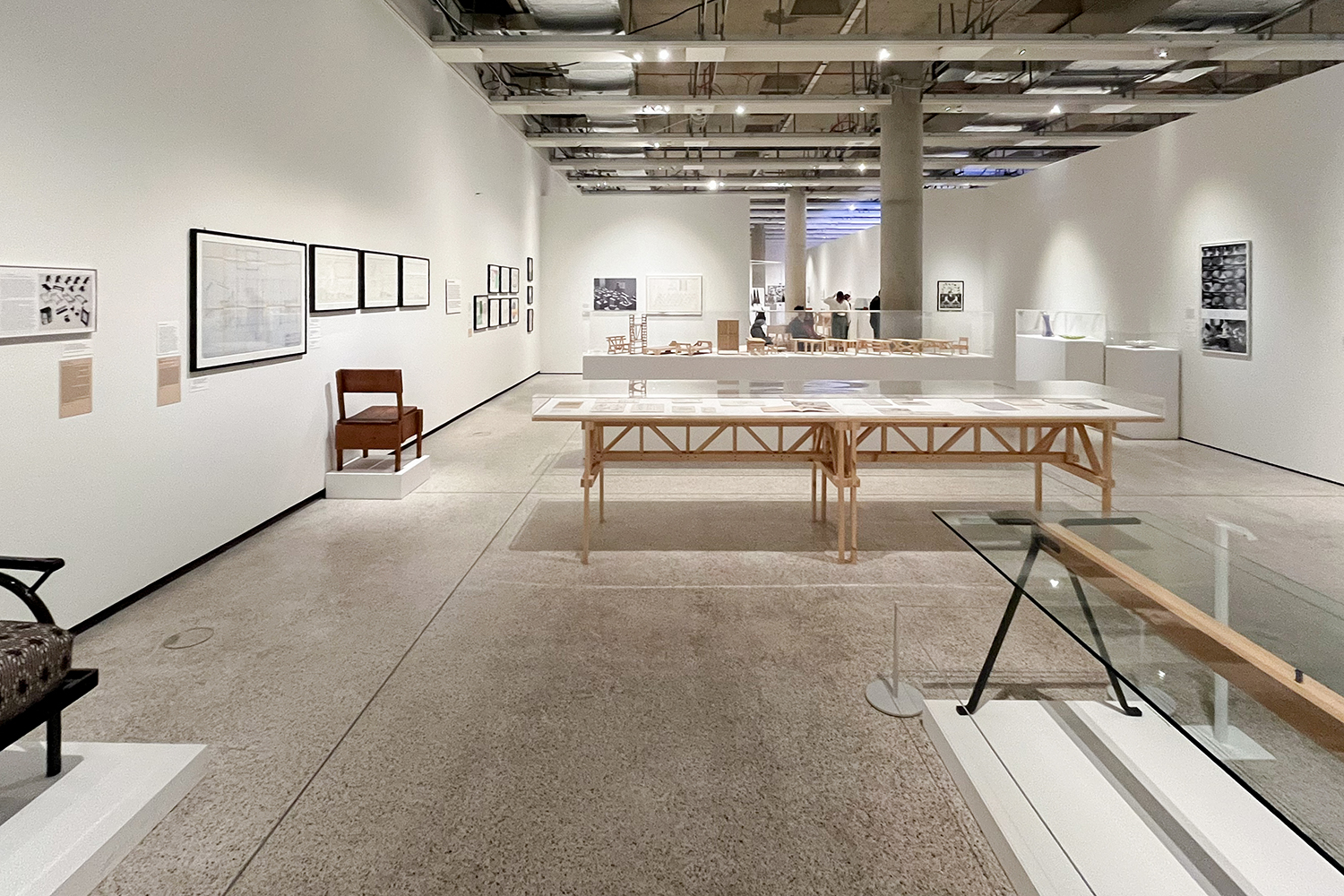DESIGN MUSEUM HOLDS A MAJOR EXHIBITION SURVEYING THE LIFE AND WORK OF ENZO MARI, THE LATE ITALIAN DESIGNER WHO INFLUENCED DESIGN ARTS WORLDWIDE WITH THE IDEA OF ‘DEMOCRATIZATION OF DESIGN’
TEXT & PHOTO: PARK LERTCHANYAKUL
(For Thai, press here)
The Enzo Mari exhibition at the Design Museum unfolds as a meticulous retrospective exploring the six-decade-long career of Enzo Mari, the Italian maestro revered as the ‘conscience of the design world’ and among the most distinguished designers of the 20th century. Curated by Hans Ulrich Obrist and Francesca Giacomelli, who also helmed Mari’s exhibition at the 2020 Milan Triennale, this comprehensive display emerged shortly after Mari’s death, marking it as the definitive collection of his prolific contributions to design.
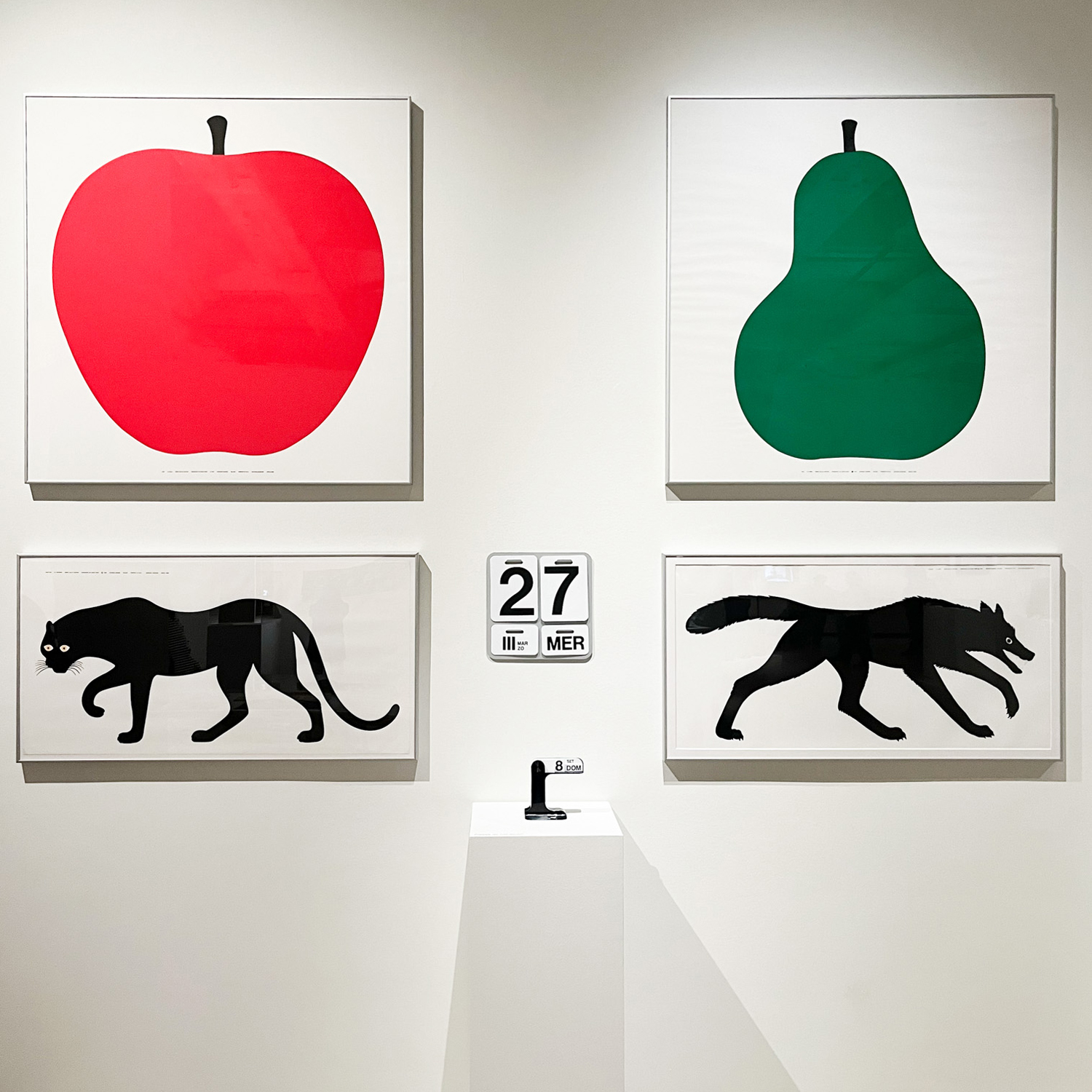
The Nature Series’ silkscreen prints along with table and wall calendars which allow adjustment of dates, months, and days of the week

This exhibition covers an expansive array of design disciplines with over 300 pieces selected from Mari’s vast body of 2,000 works. From graphic arts to product design—spanning furniture, household items, toys, picture books, vases, lamps, and containers to fine art. Mari’s work is notably shaped by post-industrial thought, with a focus on reinventing industrial systems and manufacturing techniques to better the lives of workers through clever and thoughtful design solutions. Notable examples include his approach to welding, which avoided grinding for a polished finish, instead embracing the aesthetic of visible welds through strategic placement. Furthermore, Mari innovated with furniture designs in processed wood that could be assembled using only nails, bypassing the need for cutting, drilling, or additional hardware. This simplicity in construction not only reduced labor and costs but also made the designs more accessible to the general public.
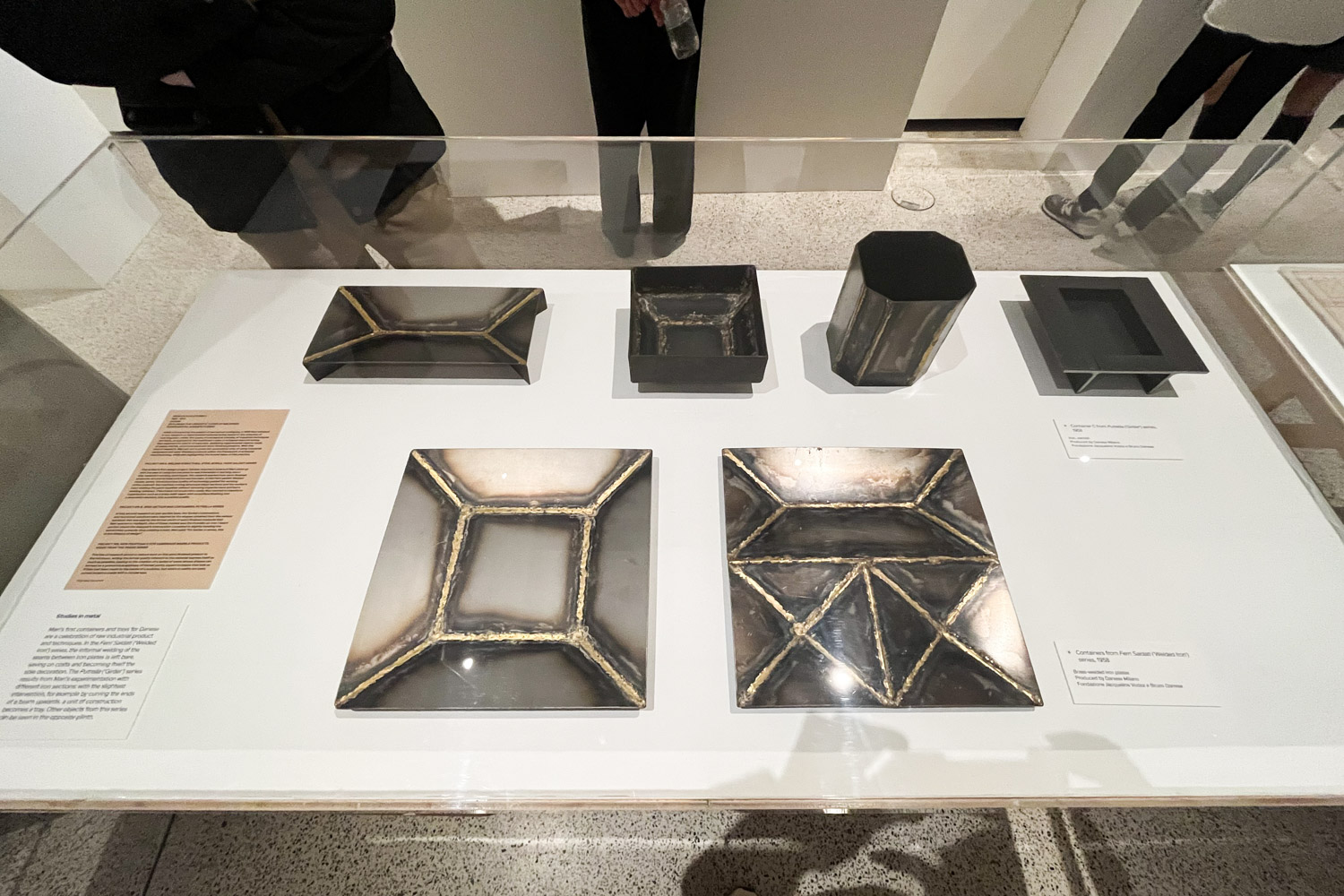
Steel utensil designs with welding marks

A replica demonstrating the furniture manufacturing process from woods and nails according to Mari’s detailed texts on the book ‘Autoprogettazione’
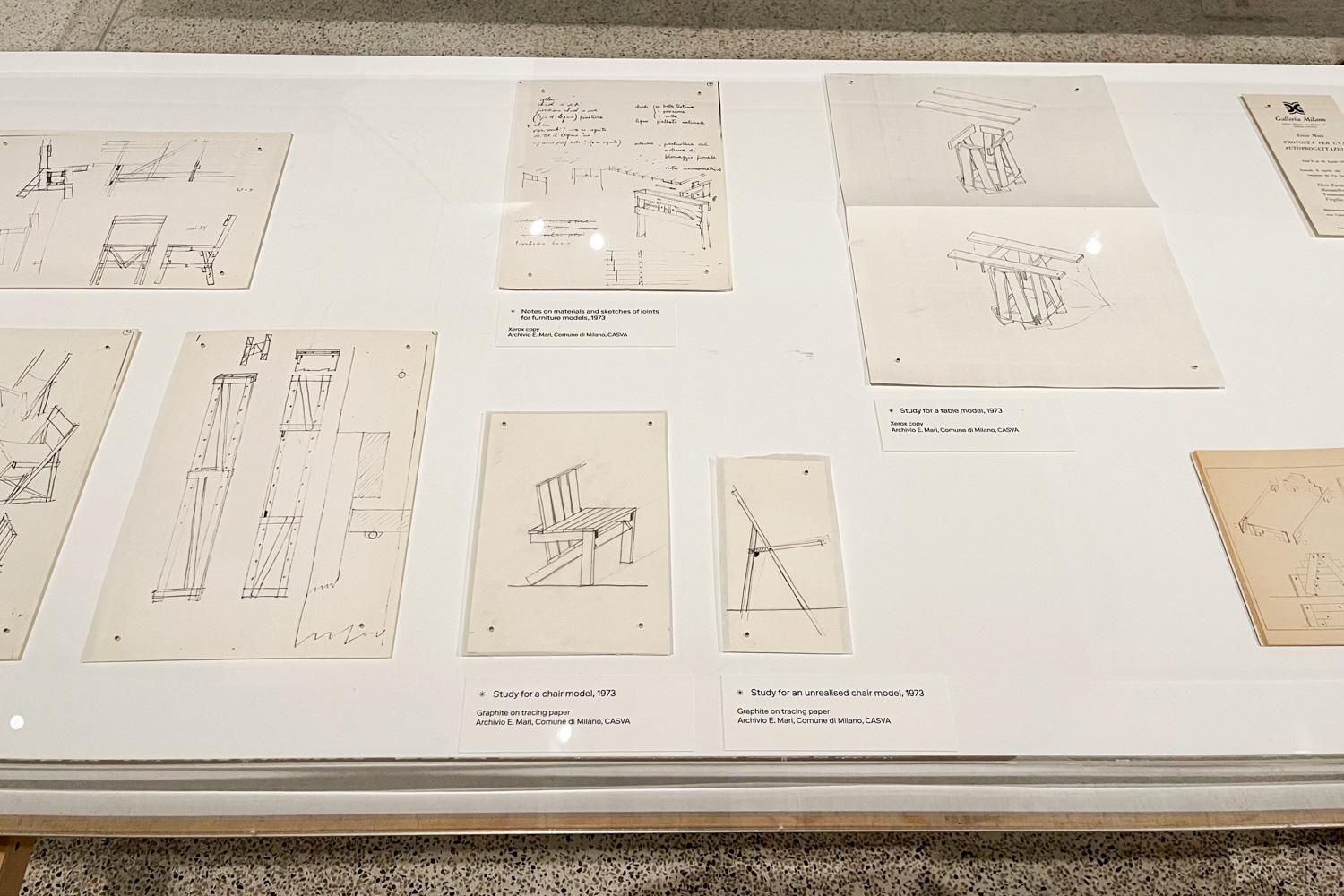
The ethos of Mari’s entire body of work is encapsulated in the ‘democratization in design’ philosophy, advocating making design accessible and participatory, and breaking down barriers imposed by manufacturers and the professional design community. His approach facilitated the spread of design knowledge and fostered products that simplified manufacturing processes, empowering everyday people with the idea that they too can be designers and creators. This approach posed a formidable challenge to established industrial production practices and encouraged a ‘do it yourself’ ethos among individuals to unleash their own creative potential. Though not universally successful during his lifetime—and candidly acknowledged by Mari himself—his endeavors marked him as a social activist whose design practice aimed to subvert the dominant paradigms of a consumerist society. The enduring dialogue around his ideas and the sustained interest in his works, some 60 years later, attest to the persistent relevance and influence of Mari’s visionary designs and radical thoughts.
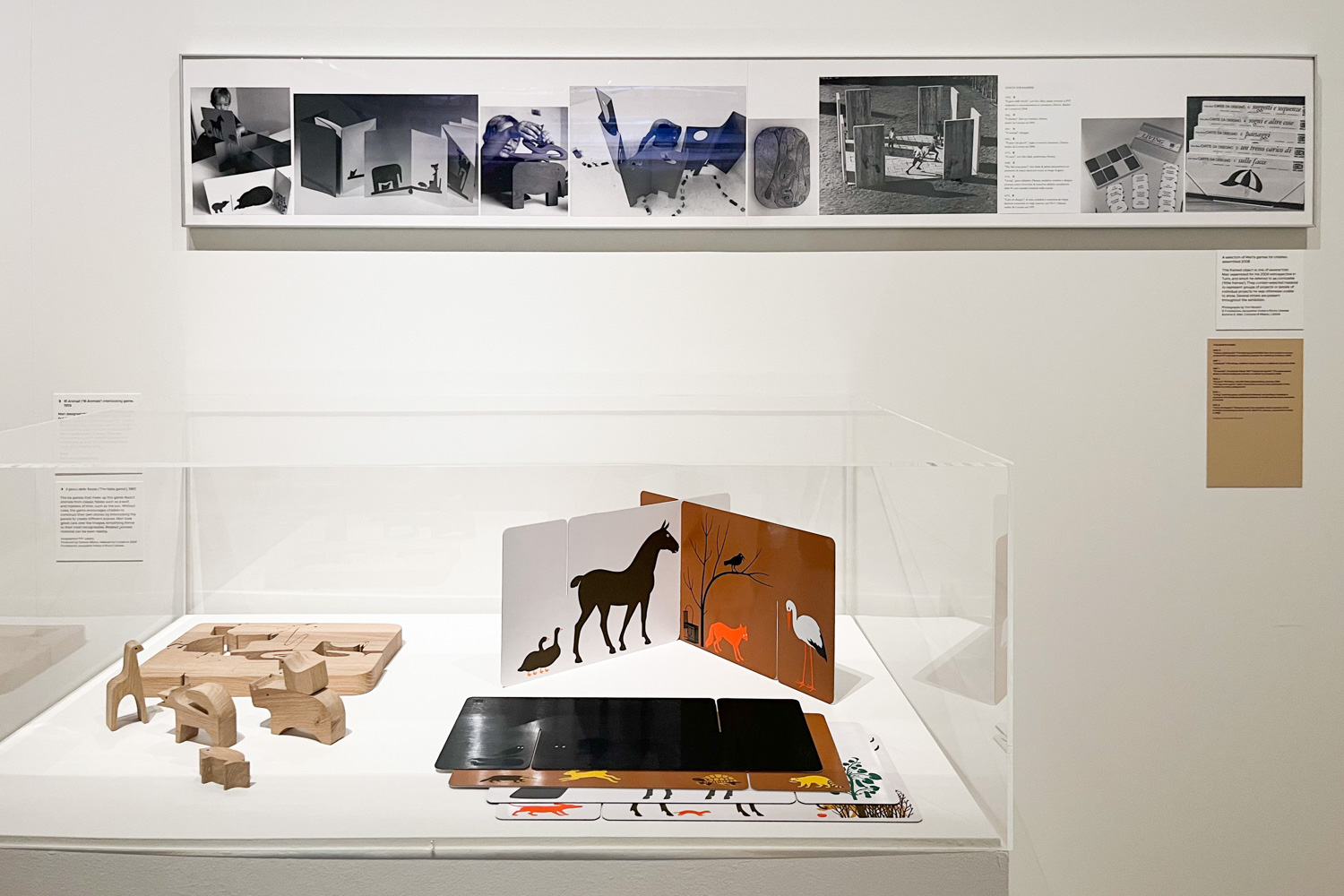
Animal Wooden Puzzles ‘16 animals’ and a graphic book at the back illustrating a playing instruction, and other Mari’s designs for kids
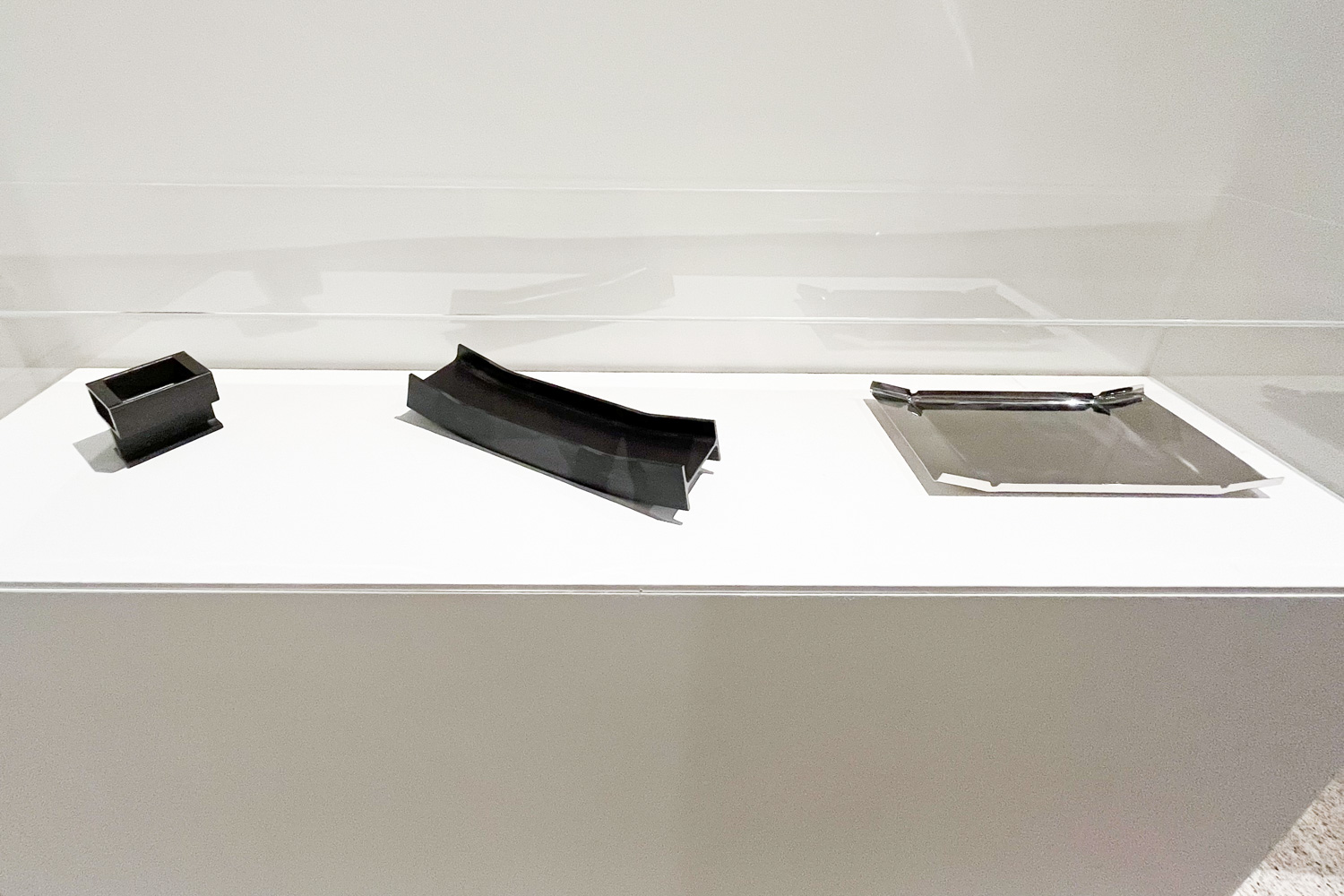
the ‘Putrella’ fruit tray and other Mari’s steel trays
Within the exhibition, there is also a video display of interviews with Mari, conducted by Hans Ulrich Obrist, one of the exhibition’s designers. Obrist, who worked closely with Mari during the 1990s, posed various questions about Mari’s life, design philosophy, and methods. The responses, delivered by Mari himself and possibly influenced by his personal traits and age, were forthright and unfiltered. Although translated into more polite terms, this interview conveyed a powerful, inspiring message with its blunt delivery.
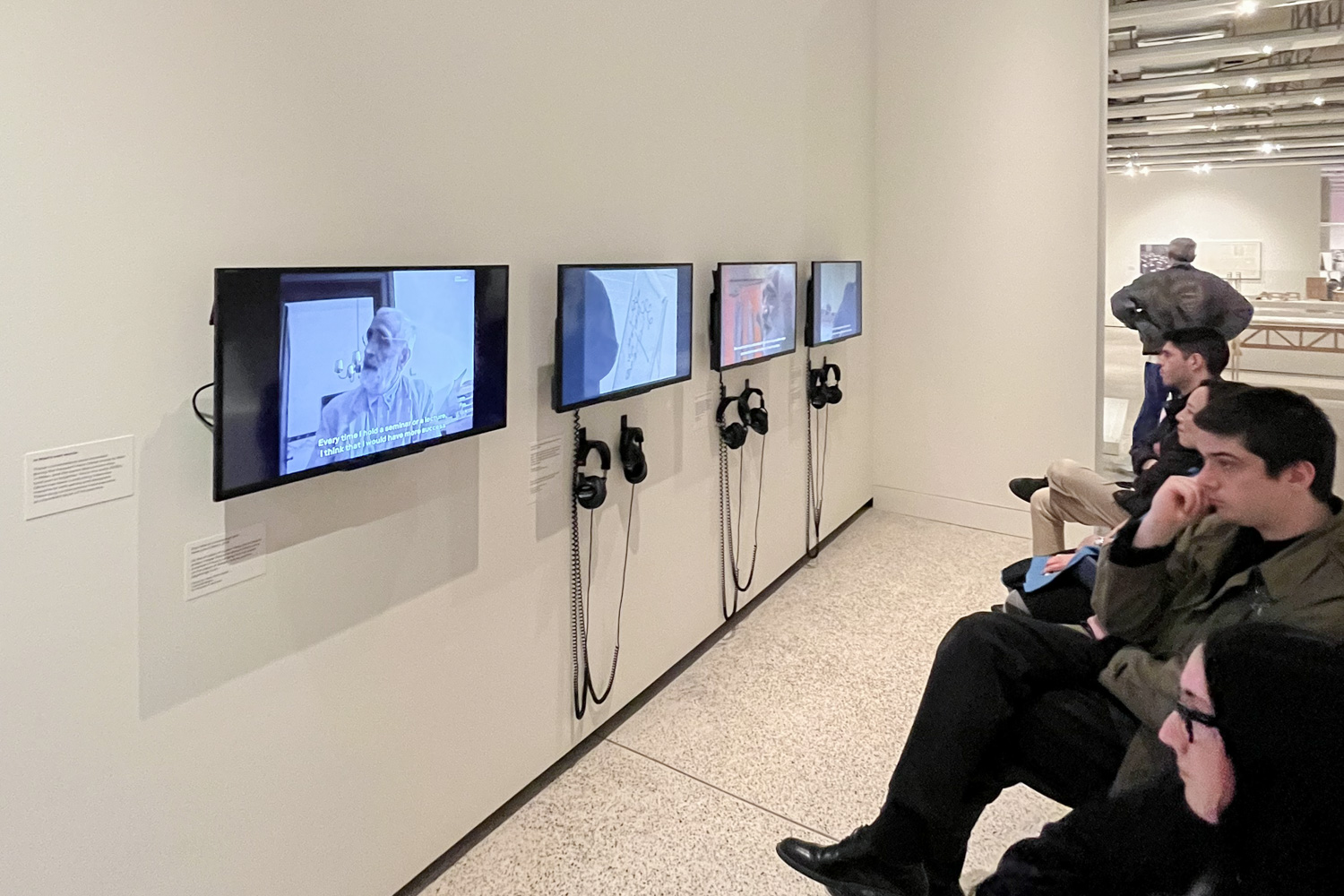
The interview video with Mari by Ulrich Obrist
Equally compelling is the exhibition in the central hall, which visitors can access without an entry fee. Titled ‘Grazie Enzo: Contemporary Responses to Enzo Mari’ this supplementary exhibition pays homage to Enzo Mari, demonstrating how his ideas continue to influence the contemporary design world. Along the pathways of the Design Museum’s central hall, fourteen selected works from London designers, echoing or inspired by Mari’s concepts, are showcased. These include intriguing designs such as a paper mobile phone—where one uses a pen to jot down contacts’ names and numbers—and wooden toys that can be disassembled and reassembled into any desired configuration.

A standout piece in this additional exhibition is Martino Gamper’s design of coffins as a tribute to Mari and his wife, Lea. Gamper crafted these pieces according to the principles in Mari’s book ‘Autoprogettazione’, using only processed wood and nails—materials predominantly used by Mari. Deeply evocative, Gamper named these works ‘L’ultimo mobile per Enzo’ (The Last Piece of Furniture for Enzo) and ‘L’ultimo mobile per Lea’ (The Last Piece of Furniture for Lea).
If you’re considering visiting this exhibition, it is advisable to set aside at least three hours to thoroughly explore both sections. Plan to spend a minimum of two hours in the main exhibition to fully appreciate its depth, while a half-hour should suffice for the outdoor section.
The Enzo Mari exhibition opened on March 29th and will continue until September 8th, 2024 at the Design Museum in London, England. There is an admission fee for the main exhibition, while the supplementary exhibition can be accessed free of charge.


